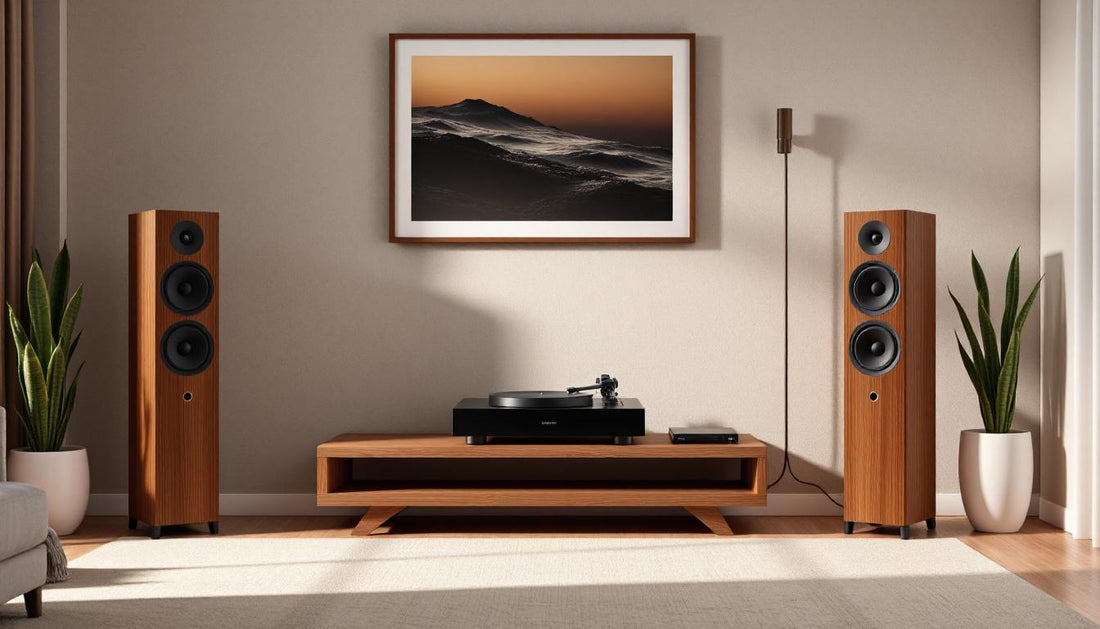
How to Set Up an Audiophile-Grade Listening Room at Home
Share
Introduction
There's nothing quite like experiencing music in its purest form—every detail, every note, every breath, exactly as the artist intended. Setting up an audiophile-grade listening room at home requires more than just high-end equipment; it demands thoughtful planning, the right environment, and attention to acoustic details. In this guide, we'll walk you through how to transform any space into a true audiophile haven. At Baboom Baboom, we understand the importance of high-quality audio experiences, whether in your car, home, or beyond. Learn more about who we are on our About Us page.

Choose the Right Room
Selecting the ideal room is the first step in creating an exceptional listening environment. Look for a space that's:
- Rectangular rather than square
- Free from too many large windows
- Not overly crowded with furniture
A room that's approximately 1.6 times longer than it is wide tends to offer better acoustics. Avoid basements if possible, as they often suffer from excessive humidity and noise issues. Hard, reflective surfaces like glass and bare walls can cause unwanted echoes and brightness in the sound, so rooms with carpeting, heavy drapes, and bookcases will naturally perform better.
Think about location, too. Choosing a room away from high-traffic areas in your home will minimize external noise interruptions, allowing you to focus solely on the music.
Prioritize Acoustic Treatments
Even the best speakers can sound poor in a bad acoustic environment. To perfect your room's sound, invest in acoustic treatments like:
- Bass traps: placed in corners to absorb low-frequency energy
- Absorption panels: installed on walls to tame mid and high frequencies
- Diffusers: scatter sound waves for a more natural ambiance
Focus first on treating first reflection points (sidewalls, ceiling, floor) and managing bass response. The goal is to strike a balance—you don't want the room to be overly "dead" (absorbing too much sound) or "live" (with too many reflections).
Strategic placement of rugs, thick curtains, bookshelves, and furniture can also help fine-tune the room's acoustic signature. Every room is unique, so don't hesitate to experiment with positioning and materials to achieve the clearest, most natural sound.

Invest in High-Quality Equipment
Your listening experience will be defined by the quality of your gear. For a true audiophile setup, consider:
- Speakers: Bookshelf or floor-standing speakers from reputable brands
- Amplifiers: High-fidelity, well-matched with your speakers
- Source Components: High-res streaming devices, turntables, or CD players
- Cables and Accessories: Quality speaker cables and interconnects
Remember, synergy between components often matters more than price tags. It's better to have a perfectly matched mid-tier system than mismatched high-end equipment. Pay attention to specifications like speaker sensitivity and amplifier output to ensure compatibility.
Don't forget about isolation products like speaker stands and vibration-dampening platforms for your electronics. These accessories can reduce unwanted resonance and subtly improve clarity and imaging.

Perfect Your Speaker and Listening Position
How you place your speakers and seat yourself will drastically affect sound quality. Follow the "equilateral triangle" rule:
- Place your speakers and listening chair at equal distances from each other.
- Position speakers at ear level.
- Angle the speakers slightly inward toward your seat (known as toe-in).
Start with speakers placed about 1/3 of the room length from the front wall and fine-tune from there. Small adjustments—sometimes just a few inches—can significantly change the listening experience. Avoid placing speakers too close to walls, as this can cause excessive bass boom.
Also, position your listening chair slightly away from the back wall to minimize reflections and standing waves. Ideally, you'll sit in the "sweet spot" where direct sound and reflections blend harmoniously, creating a realistic, three-dimensional soundstage.
Control Ambient Noise and Power Quality
Silent rooms are the canvas for beautiful sound. Reduce background noise by:
- Adding thick curtains
- Using rugs and carpets
- Sealing windows and doors
Consider soundproofing measures such as installing solid-core doors and using acoustic caulking to seal gaps around windows and outlets. HVAC noise can also intrude on your listening experience, so check if quieter systems or modifications are available.
Additionally, ensure your power source is clean. Consider installing a dedicated power line for your audio system and using a high-quality power conditioner to minimize electrical noise. Some audiophiles even invest in isolated power supplies or balanced power transformers to achieve ultimate clarity and consistency.

Fine-Tune and Trust Your Ears
Once everything is set up, spend time critically listening and making adjustments. Every room and setup is different, and small tweaks can yield big rewards. Listen to familiar tracks and assess factors like:
- Imaging and soundstage width
- Bass tightness and extension
- Midrange clarity
- High-frequency sparkle without harshness
Move your speakers slightly, change toe-in angles, adjust seating position, or rearrange acoustic treatments if necessary. Your ears are the final judge—trust them over measurements alone.
You may also consider using measurement tools like Room EQ Wizard and a calibration microphone to objectively analyze your room's acoustic performance. However, don't get lost in the numbers; prioritize what sounds best to you. Explore our Wholesale Program for exclusive access.

Conclusion
Setting up an audiophile-grade listening room is as much an art as it is a science. From choosing the right space and treating acoustics to investing wisely in equipment and optimizing speaker placement, every detail counts. With patience, careful planning, and a genuine love for music, you can create a home listening environment that rivals professional studios—and offers a magical escape into sound whenever you need it.
Are you ready to unlock the full potential of your music collection? Start setting up your dream listening room today and experience music like never before. Remember: the journey is part of the fun. Embrace the process, enjoy the learning curve, and above all, let your passion for great sound guide every decision you make. Experiment with our Expert Software Tools to get customized wiring insights. Want more tutorials like this? Visit our Articles Page.








